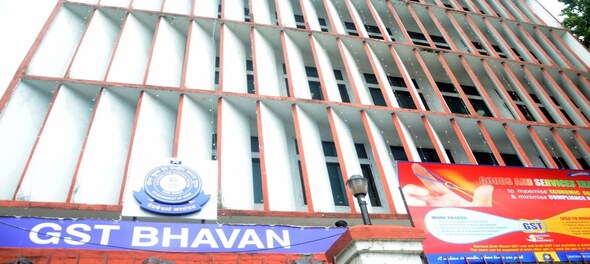
As Goods and Services Tax (GST) collections slip and the states are not getting their compensation dues, the upcoming council meeting on December 18 is likely to have a heated discussion on reasons and measures needed to augment revenues.
According to the GST Council agenda accessed by CNBC-TV18, the council will take detailed cognizance of falling GST revenues. The council agenda notes that “there is a widening gap between the projected revenue collection and the fund requirement which calls for immediate measures for revenue augmentation.”
GST Council will also be given a detailed analysis of the reason behind the current decline in revenue collections. The GST Council comprises of union finance minister as the chairman and minister of state finance as vice chairman of the council. All the states and union territory finance ministers are members of the GST Council.
Also read:
The reasons that have been cited in the agenda includes a backdrop of entire rate-setting exercise undertaken by the council at the time of roll of GST. Agenda says that since the introduction of GST, several rate revision and rationalisation exercises have been done and several other factors such as the increase in the threshold limit for exemption and changes in composition scheme have impacted GST revenue. The agenda also gives a backdrop saying that frequent rate rationalisation leads to deviation from pre-GST tax incidence (including cascading).
It also notes that the current GST rates are a deviation from initial estimated revenue-neutral rate (RNR) 15 percent and 15.5 percent (Centre and states combined) suggested by former chief economic advisor, Arvind Subramanian and the RNR deviation distorted the then “assumptions that on introduction of GST, the Indian tax administration collection efficiency would move up.”
According to the GST Council Secretariat, “Broadening of the tax base, additional resource mobilisation and improved tax compliance will help achieve the desired outcome of revenue augmentation.”
Not just the reasons, some of the steps already taken by the Centre to augment revenue collections are also noted by the council. These include setting up of a Committee of Officers with terms of reference such as "inter-alia, suggestions of measures for expansion of tax base. States were also requested to provide specific suggestions on GST and compensation cess rates to be levied on various items, review of current exemptions, rate calibration for addressing inverted duty structure, the introduction of compliance measures other than those already in existence and any other measures for revenue augmentation.”
This Committee of Officers has met two times so far and has taken into consideration the suggestions received from the states. CNBC-TV18 on December 10 reported that the Committee of Officers has streamlined various suggestions given by states and will give a detailed presentation on the revenue scenarios and policy options to the GST Council on December 18.
Many state officers and stakeholders have pitched for rate rationalisation saying that the government can consider bringing down the 4-slab structure of GST to 3 rates, by increasing the 5 percent slab to 8 percent or above and merging the 12 percent with 18 percent slab and keeping the 28 percent slab as is.
Not just this, some states have also pitched for “increasing the cess rate on sin goods, which according to sources can yield close to Rs 2,000 crore more in the compensation cess kitty to meet the requirements of states,” sources added.
Some states have called for the measures of rate rationalisation and hiking of cess rate as a combination along with exploring a possibility of adding some services also under the cess category, to deal with the current situation of poor revenues, sources had told CNBC-TV18 on December 10.
According to the data, the government needs close to Rs 14,000 crore every month to meet the compensation requirements of states, which can be done only through the compensation cess kitty, but on an average government is able to collect only Rs 7,000-8,000 crore every month.
This monthly requirement, of late, has increased to Rs 17,000 crore per month, in the wake of falling GST collections and if, the economy continues to grow at the current pace, then as per the current GST rates, this requirement will get increased to Rs 21,000-22,000 crore per month, sources quoted the data analysis shared to the GST Council.
Apart from revenue augmentation exercise, the council is to deliberate on issues like GST on lottery and proposal for the creation of the Public Grievance Redressal Committee.
Also, the council would review GST E-Way Bill System – FASTag Integration, new return system, integrated refund system with disbursal by the single authority, generation of electronic invoice reference number and linking of GST registration with Aadhaar and proposed changes in the GST law and GSTN system.
First Published: Dec 14, 2019 3:40 PM IST
Check out our in-depth Market Coverage, Business News & get real-time Stock Market Updates on CNBC-TV18. Also, Watch our channels CNBC-TV18, CNBC Awaaz and CNBC Bajar Live on-the-go!



